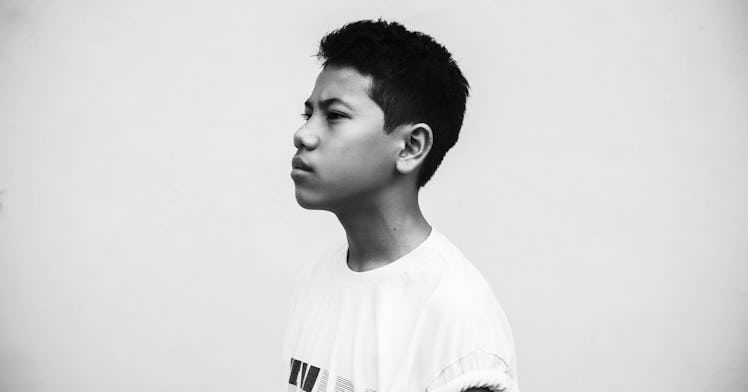Prepping Your Kid With Comebacks for Bullies
Finding the healthy place between roast battle and rolling over.

Chances are high that your child will either be bullied at some point or will witness a bullying attempt. Bullying for kids is, in essence, them testing out power structures. It’s one of those instincts that’s hardwired in the natural world — to get a higher pecking order, more resources, and all that — but has advantages that no longer apply. So until an adult steps it, it’s inevitable kids will give into the instinct, and the rest of the kids need to be prepared with a comeback for bullies. But what does that look like?
The answer depends on you kid. An appropriate comeback can help in the heat of the moment, but doing so requires your child to think through what’s realistic in situations they are likely to encounter.
Know Your Temperament
“We used to view bullies as insecure or socially awkward. But now we know from research that they’re often quite savvy,” explains learning specialist Dr. Rebecca Mannis. “They’re able to pick up on which people are going to be more sensitive, and which of their potential victims might be able to respond or stare them down.”
Understanding how your child’s emotional makeup affects their behavior should clue you in as to what is on the table for how they can respond to bullies. “Some kids are more impulsive, others are more anxious, and some can just let things roll off their backs,” says Dr. Mannis. “If a youngster gets a little more intense, they may have trouble coming up with a comeback at the moment. It’s not realistic to expect that student to say something witty.”
And you certainly don’t want to encourage a kid with a short temper to stand in and verbally spar with a bully. A child with that temperament is likely to get caught up in the moment and give the bully the response they are trolling for. Worst-case scenario? Your kid ends up crossing the line by saying something inappropriate or escalating the situation to physical violence.
Assess Your Comeback Skills
Rehearsing how to respond to a bully helps kids react well when the situation arises. “Some kids are very nimble, but other kids are not as good with language,” says Dr. Mannis. “If you put a kid who has trouble retrieving words in the moment in a bullying situation, how can we expect that child to spontaneously respond to a bully?”
Take time to brainstorm optimal comebacks with your child based on their temperament, and make a game of roleplaying what you come up with. This preparation is effective across learning styles and learning speeds because you can adapt them for verbal and written processors at a pace that works for the individual kid. Ask your kid what a bully might say to them, and think through various responses they can offer up. And once you have scripts that work, have fun rehearsing them.
Keep things light by using silly put-downs when it’s your turn to be the bully, and mix it up by flipping roles to allow your child to bully you. Adding levity to the situation frees them up to focus on the responses you have come up with together, and reversing roles is a chance for you to model what you’re hoping to see from them.
One key to effective comebacks for bullies is to keep responses simple and easy to recall. Even one-word comebacks like a confidently delivered “whatever” can give your kid the time and space needed to remove themselves from the situation. “Find one-offs that disengage the bully and do not permit for escalation or the need for a retort,” encourages Dr. Mannis.
Read the Room
A weekend bully caught in the wild requires a different response to a bully in a hallway between classes. The former might require a more direct and assertive de-escalation and the latter, a need to go straight to an adult. A school that has truly a zero-tolerance policy may allow for very little banter, so your child’s comebacks will need to be brief and gentle. But other situations may allow for or even require more assertiveness in order to disengage a bully.
5 QUICK AND EFFECTIVE COMEBACKS FOR BULLIES
Comebacks for bullies should be custom-made for your child and the situation they are in. But here are some universally effective comebacks with high deescalation potential:
- “Don’t Hate. Congratulate.”: Easy to remember because it’s funny and it rhymes. Humor may give the bully pause.
- “Stop.”: Direct and to the point.
- “That’s not true.”: Demonstrates assertiveness and self-advocacy.
- “That’s not very nice.”: Stated calmly, can force bully to self-evaluate.
- “It’s ok if you don’t like me.”: Self-affirming and disarms a bully who is picking on someone they who perceive are low in self-esteem.
If your kid takes a deep breath, they will probably be able to assess how much of a threat the bully is, as well as possible exit strategies. A large size or age gap may require a faster escape and need to find physical safety. But a bully on a similar footing allows for a calmer and more deliberate path to resolution.
Dr. Mannis says that we need to prepare kids even for the things we put thought and effort into protecting them from. “Ideally, we want to put our kids in situations that have a culture a culture of kindness, but we do need to equip our kids if we’re expecting them to effectively manage social cruelty.”